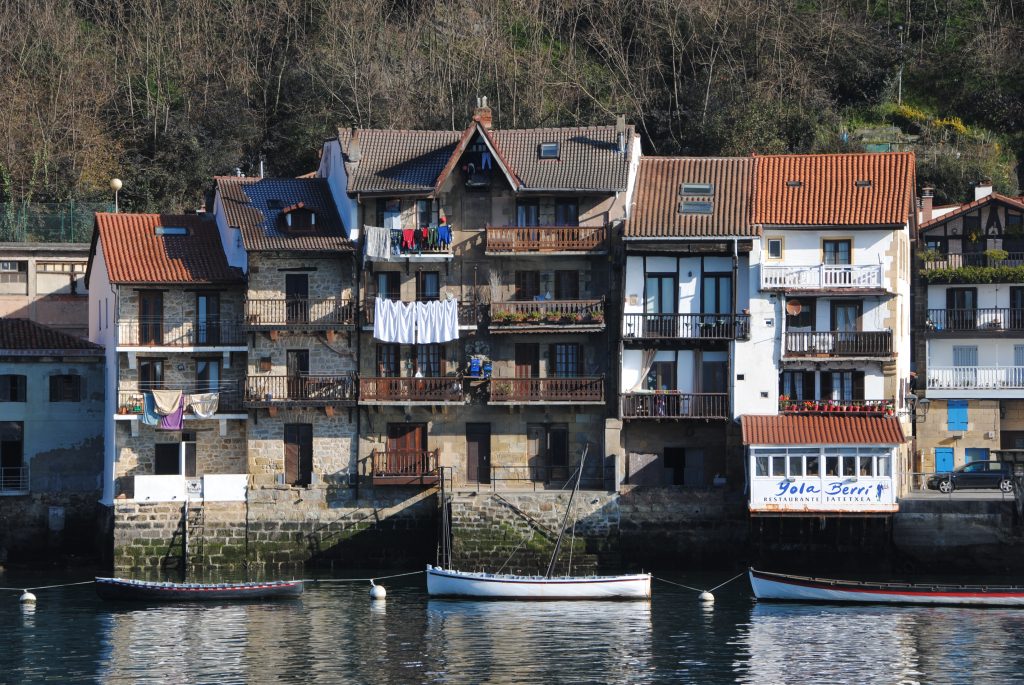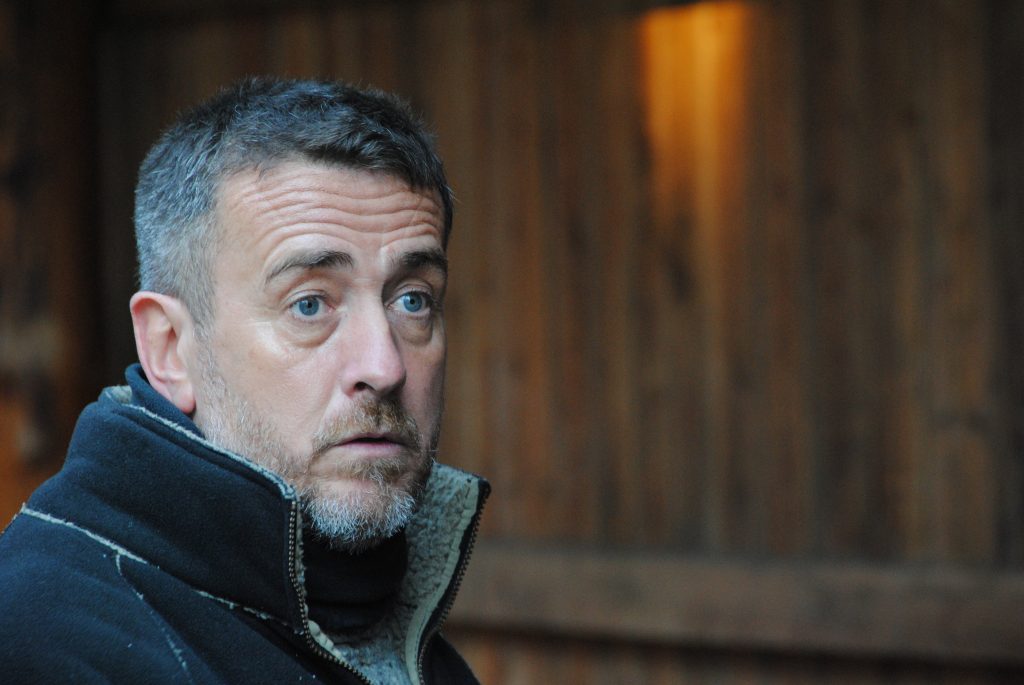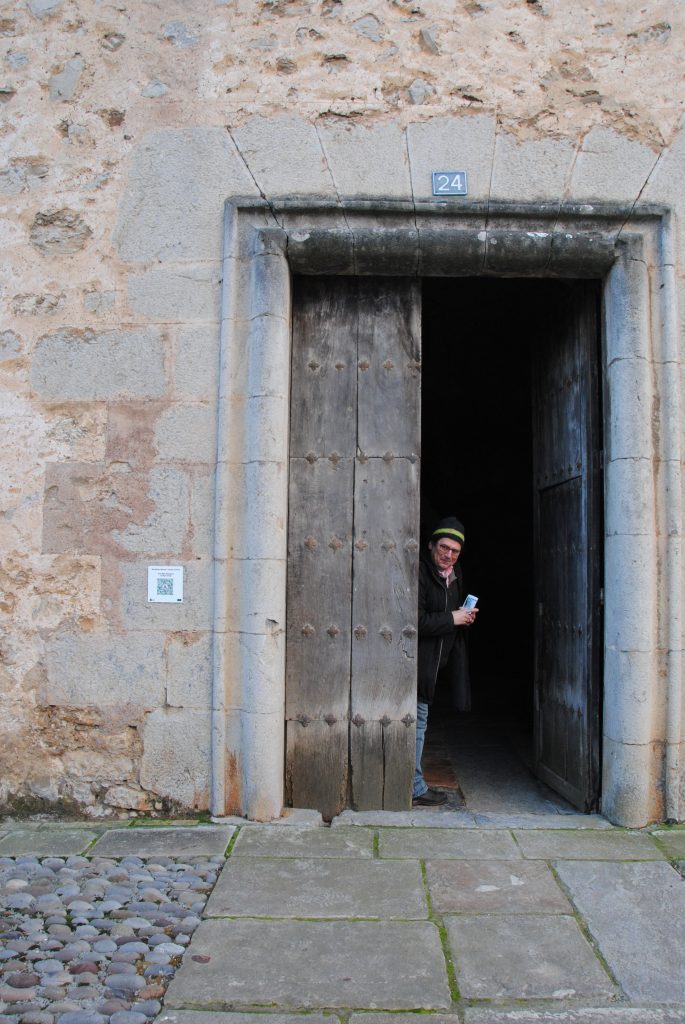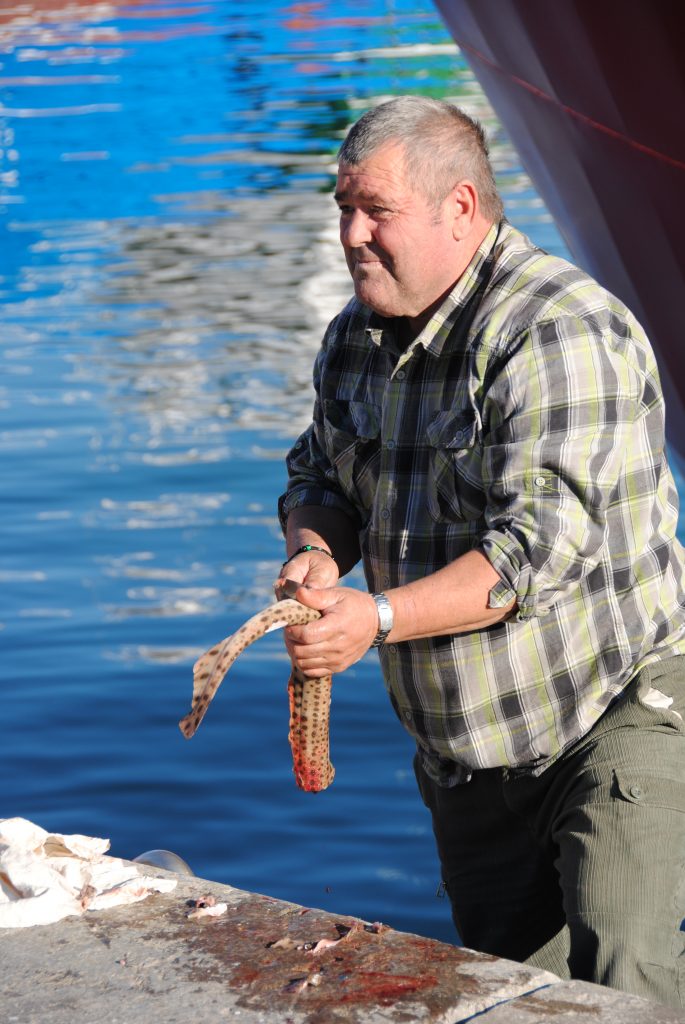
Fishing boats in the historical harbor of Getaria (the birthplace of Cristóbal Balenciaga, for the fashion-minded reader).

They lay-out of historical harbour villages is often very dense, like here in Gipuzkoa.
by Linde Egberts, postdoctoral researcher and coordinator Heritage Studies
Coastal landscapes in Europe are historically interconnected. For centuries, shipping was the easiest and safest way to travel and trade with people in other parts of the world. And trade came the exchange of food and exotic products, but also ideas, values, fashions, immigrants and of course diseases. Moreover, from the seventeenth century onwards, the beach became regarded as a place of leisure in the Western world. Starting in Britain and spreading across continental Europe, coastal towns evolved from port- and harbor towns to seaside resorts.

The Hericoast colleagues prepare the next project workshop. Picture by Inge Gotzmann.
So, historically speaking, coastal landscapes have a lot in common. When we look at the heritage in coastal landscapes throughout Europe, it is not surprising that they face similar challenges, despite their differences in climate, morphology, politics and cultures. Questions they share are for example: how do we protect unique fishing and boat building traditions, if industrialization has pushed small fisheries out of the market? And how do you balance the popularity of the beaches among tourists with developing historical coastal villages in a sustainable way? Or how do you include local guides, hoteliers, slow food cooks and tourism operators in conveying stories about how people in these coastal areas lived in the past? It is for this reason that six coastal regions have joined forces and exchange their expertise on how to manage heritage in these coastal environments in a project called HERICOAST.

Xabier Agote shows us the Albaola wharf, where an historical reconstruction is built of the sixteenth-century whaling ship San Juan. The wharf annually attracts around 50.000 visitors.
We are take part in this project, by advising the partners on the ways in which the can learn from each other most effectively. In order to get to know the regions better, it was time to pay a visit to the partners in the Spanish Basque area: Lea-Artibai. Our colleagues from Norway and the European platform on landscape policy, Civilscape, joined me for three days of meetings, visiting heritage sites and learning from the expertise of our Basque colleagues Bidatz Basterretxea, Iñigo Uriarte, Leire Arrizabalaga and Nekane Irusta.

Dirk Gotzmann of Civilscape visits the pilgrim chapel of Markina-Xemein.
What struck me most in this visit was how intensively the Basque heritage preservationists are connected to tourism entrepreneurs, especially when it comes to regional cuisine. The Basques are proud of their international fame for blending historic cooking traditions with innovative gastronomy. The involvement of local guides, cooks, cooking experts, fishermen and farmers in the regional promotion of food as heritage is very strong. Moreover, these stakeholders manage to address the relationship of food production to the historical coastal landscape and the typical ways of life of the Basque people. Surprisingly, they don’t seem to regard globalization as a threat to their regional tradition and heritage. Rather, they embrace the small-scale possibilities of re-telling the stories from the past to new audiences. They appear to accept the fact that many precious things are lost in the course of change, but many new chances for telling stories and getting a taste of the region might emerge.

A local fisherman cleans a small shark for dinner.